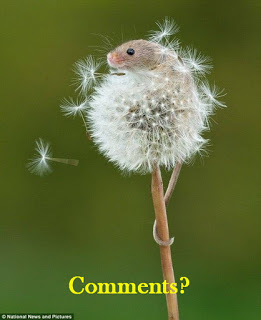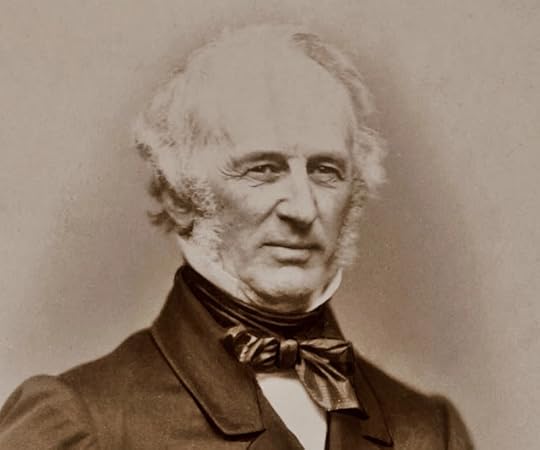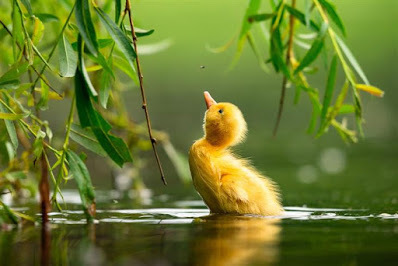Clancy Tucker's Blog, page 49
June 7, 2021
8 July 2021 - MICHELANGELO'S REVEALING ART

MICHELANGELO'S
REVEALING ART
G'day folks,
In a previous post, I showcased how certain details of the Sistine Chapel wall painting called the 'The Creation of Adam' by Michelangelo have anatomical references, but it turns out that the famous fresco is by far not the only reference to brain anatomy in the chapel created by Michelangelo. Another fresco titled 'The Separation of Light from Darkness', too, contains several anatomical references, namely to the cerebellum, optic nerves, the spinal cord, and the brainstem. But how could the famous sculptor have such an excellent knowledge of anatomy, weren't dissections prohibited by the church at the time? Well, it actually turns out that for a short period at the beginning of the 16th century, when Michelangelo was a young man, public dissections of condemned criminals were briefly allowed by the Catholic Church.
The young artist participated in around 30 such autopsies and made several anatomically-accurate sketches, which were discovered in the early 1600s. So, it is very likely that his inclusion of these anatomical brain structures in the Sistine Chapel was a way to share his knowledge.
 Clancy's comment: Extraordinary.
Clancy's comment: Extraordinary.I'm ...


June 6, 2021
7 July 2021 - PATRICK KRAMER'S REALISTIC ART

PATRICK KRAMER'S
REALISTIC ART
G'day folks,
Here is a great talent.
Patrick Kramer is a hyper-realistic painter from Utah, the U.S. He creates his art from photos and paints whatever captures his interest, be it from still lives, portraits, city scenes or landscapes. He is a perfectionist and has found art to be a great outlet for his slightly obsessive personality. He studied painting in college and experimented with hyper realism as a way of perfecting his craft. While he never intended to pursue the style, he found it hard to give up, as it suited his nature. A piece can take him anywhere from 1 to 6 weeks, about 50 to 300 hours, depending on the size and the complexity.










 Clancy's comment: The paintings of glasses are exceptional.
Clancy's comment: The paintings of glasses are exceptional.I'm ...


6 July 2021 - POWERFUL IMAGES OF THE OCEAN by LUKE SHADBOLT
 POWERFUL IMAGES OF THE OCEANby LUKE SHADBOLT G'day folks, Growing up on the coast of Australia, the ocean had been a constant in the life of the photographer Luke Shadbolt. “I feel like, for anyone who has grown up with the ocean as their playground, there is an unspoken calling that takes place. It might be every day, or maybe once a month or even less, but eventually, you need to get back to the ocean to reset,” Luke explained in a recent interview.
POWERFUL IMAGES OF THE OCEANby LUKE SHADBOLT G'day folks, Growing up on the coast of Australia, the ocean had been a constant in the life of the photographer Luke Shadbolt. “I feel like, for anyone who has grown up with the ocean as their playground, there is an unspoken calling that takes place. It might be every day, or maybe once a month or even less, but eventually, you need to get back to the ocean to reset,” Luke explained in a recent interview.
The relationship with the ocean grew stronger during Luke’s teens, which he spent mostly surfing. As an art student at university, he fell in love with photography. Shooting the waves was the ultimate way to combine his two passions. Luke’s exploration of the ocean resulted in some fascinating and powerful image, showcasing its vastness and multiple forms.
Luke shares that he usually goes into a project with a certain vision in mind, but the reliance on nature should always be taken into account. A lot of the conditions for certain photographs only align once or twice a year in specific locations. "It can be frustrating when the swell or sun or wind don’t cooperate how you’d envisaged in your mind, but I like to have that flexibility and draw on the experience of being in the moment."
"Just being around the ocean is the best part. It’s kind of like a reset button or a form of meditation. I feel very privileged to experience these extremities of nature, it really is about the experience more than anything, the resulting photos are always just a simulacrum."









Clancy's comment: Brilliant shots.
I'm ...


June 4, 2021
18 July 2021 - BRILLIANT PAINTINGS by KAMALKY LAUREANO

BRILLIANT PAINTINGS
by KAMALKY LAUREANO
G'day folks,
As I always say, some folks were given extraordinary talent, and here is one of them.











 Clancy's comment: Extraordinary detail, eh? Well done, Kamalky!
Clancy's comment: Extraordinary detail, eh? Well done, Kamalky!I'm ...


June 1, 2021
5 July 2021 - INTERESTING FACTS ABOUT THE VANDERBILT EMPIRE

INTERESTING FACTS ABOUT
THE VANDERBILT EMPIRE
G'day folks,
January 4, 1877 — Cornelius Vanderbilt, the first of the “robber barons” and at one time the richest man in America, died on this day. He left $100 million – equivalent to $2.5 billion today – to his son William, who went on to become the richest man in the world.
Cornelius was a descendant of Dutch settlers and was born on Staten Island, New York, in 1794, in what can best be described as humble circumstances. His father was a farmer who made extra money by ferrying produce between Staten Island and Manhattan.
Cornelius, who went to school only occasionally, helped his father on the water, and by the time he was a teenager he was transporting cargo around New York harbour in his own boat, which he had bought with a $100 loan.
In 1817, aged 23, he got a job operating a steamboat but after his employer died, Vanderbilt began his own steamboat operations, buying up competitors and entering untapped markets.

Fiercely aggressive, he undercut the fares of his rivals, forcing some out of business. He was reported to have remarked, “there is no friendship in trade”, but in his 2009 Pulitzer Prize-winning biography, The First Tycoon: The Epic Life of Cornelius Vanderbilt, T.J. Stiles goes further. He describes his subject as “a tough guy, getting into scraps with other men, beating the hell out of them and knocking them unconscious.”
By the mid 1840s Vanderbilt was running more than 100 steamboats, and in 1855 he began a transatlantic steamship business.
This was the Gilded Age, named after the novel of that title written by Mark Twain in 1873, which tells of greedy industrialists and corrupt politicians. The real-life Gilded Age was presided over by entrepreneurs known as “captains of industry” or “robber barons” according to different viewpoints.
What is not disputed is that they grew extremely rich through the monopolies they created in the steel, petroleum, transportation and banking industries. Apart from Vanderbilt, the best known included John D. Rockefeller, Andrew Carnegie, Leland Stanford and J.P. Morgan.
Vanderbilt, having earned the nickname “Commodore”, created the largest shipping empire in the world. But the Civil War was looming and in the 1860s he decided to invest in railways, believing they were the key to uniting America.
It proved to be a shrewd move and by the end of the war Vanderbilt had become the richest man in America with a net worth of over $65 million {nearly $75 billion today).
He purchased railroads in New York, improved the services, cut fares, and reportedly made $25 million. He was the driving force behind Manhattan’s Grand Central Depot, which opened in 1871. The station was replaced by present-day Grand Central Station in 1913.
Before Vanderbilt, a traveller from New York to Chicago had to change trains 17 times. Then the Commodore forced the small operators out of business, built his own lines and consolidated a route between the Atlantic Ocean and the Great Lakes. He carried seven million passengers each year.
At the time of his death in 1877, Vanderbilt’s fortune was valued at $100 million (equal to nearly $2.5 billion today). That was said to be more money than the U.S. Treasury held at the time.
His eldest son William "Billy" Vanderbilt inherited most of it. The Commodore is said to have told him: "Any fool can make a fortune; it takes a man of brains to hold onto it." Billy did more than that. With strong business acumen he doubled his inheritance to nearly $200 million, making him the richest man in the world by 1883.
Billy had no competition when it came to the inheritance. In his 1989 book, Fortune's Children: The Fall of the House of Vanderbilt, descendant Arthur T. Vanderbilt II says: “Despite the Commodore's great success as a businessman and investor, the man was notoriously harsh and rarely trusted his family with his business and money.
“His eight married daughters were ignored since they no longer bore the family name, but, of course, that was just one factor that barred his daughters from taking over the business.
“One time, after a daughter sold her house and asked him to invest the money for her, the Commodore doubled it and then refused to return her money. ‘Women are not fit to have money anyway,’ he said.”
Despite massive wealth, the Commodore always occupied a relatively modest home. Some of his descendants, however, spent the Vanderbilt money lavishly, building grand mansions on Fifth Avenue in New York City, including three massive townhouses called the "Triple Palaces."
They also built luxurious "summer cottages" in Newport, Rhode Island; the palatial Biltmore House in Asheville, North Carolina; and other opulent homes.
The Breakers, built by the Commodore’s grandson Cornelius, as a “summer home” in Newport, is a 70-room mansion completed in 1895. The building became a National Historic Landmark in 1994 and now attracts thousands of visitors every year.
Biltmore, finished in 1895, is a 30,000-acre estate with a 250-room French Renaissance castle. It all took six years to build at a cost of nearly $6 million (about $1.6 billion today). Now a tourist attraction, it is the largest privately owned home in the United States and is still run by Vanderbilt descendants.
Arthur T. Vanderbilt II confessed to “absolute amazement” when he was researching his book and realised just how much money had been earned in two generations of the family – and how quickly much of it was spent by the next two generations.
Within 30 years of the Commodore’s death, he said, the Vanderbilts had fallen off the list of the wealthiest families in the United States, and less than a century later, in 1973, when 120 members of the family came together for a reunion, there wasn't a single millionaire among them.

Clancy's comment: Mm ... wealth does not make you happy.
I'm ...


May 30, 2021
12 July 2021 - STUNNING SHOTS OF BIRDS IN THE WILD

STUNNING SHOTS OF
BIRDS IN THE WILD
G'day folks,
Seeing birds in the zoo is all fine and dandy, but it doesn’t come even close to being able to observe them in their natural habitat. It’s only in the wild that you’re able to observe how birds interact with each other and with the outside world, be it a baby penguin cuddling with its parents, a duckling curiously observing a fly, or a group of red-crowned cranes dancing on a wintry morning.It is the goal of the Bird Photographer of the Year contest (BPOTY, for short) to highlight the most precious, intimate, and beautiful bird moment captured on film so that we’re able to appreciate the beauty of our avian friends and partake in their adventures. For the sixth year in a row, the competition published a selection of finalists, and I'm here to share the highlights with you today. Enjoy!












Clancy's comment: Stunning work!
I'm ...


May 27, 2021
4 July 2021 - STUNNING IMAGES FROM THE TOKYO INTERNATIONAL FOTO AWARDS

STUNNING IMAGES FROM THE
TOKYO INTERNATIONAL
FOTO AWARDS
G'day folks,
Always happy to promote other photographers. I recently shared with you a few of the winning images of the Tokyo International Foto Awards 2020. The competition offered both professional and amateur photographers the opportunity to share their most outstanding photos depicting the glory of nature. With so many submissions from all around the world, I couldn’t help but share more of the breathtaking images from the competition. From powerful landscaped to majestic wildlife, the amount of talent and effort that went into capturing these shots is simply astounding.












Clancy's comment: Dazzling shots! Well done. Below you will see one of mine!
I'm ...


May 23, 2021
3 July 2021 - MAGNIFICENT SCRATCHBOARD ART by CATHY SHEETER

MAGNIFICENT
SCRATCHBOARD ART
by
CATHY SHEETER
G'day folks,
Some people have so much talent. Here is one of them.
Hyper-realistic art is incredibly impressive. And American artist Cathy Sheeter sets the bar high with her artwork, in which she creates realistic scratch drawings on ink coated boards. Scratchboard is a unique medium. Discover more about how this form of art is done and see Cathy's mesmerizing work below.
Cathy works in the medium of Scratchboard. It helps bring her animals and wildlife to life in a hyper-realistic way that no other medium can.
It is hard to believe that Cathy's realistic animal artwork is created just from scratches into an ink coated board, but that's exactly how each work is drawn.
Scratchboard starts with a solid black ink coated board. The ink is then scratched away with sharp tools to reveal a layer of white clay that is beneath the ink. The more you scratch into the surface the lighter that area will become. This enables Cathy to create a range of tones. Some of the tools she uses include a xacto knife, sandpaper, tattoo needles and fiberglass brushes.
Check out her stunning work below.









Clancy's comment: Stunning!
I'm ...


May 21, 2021
9 July 2021 - FACTS ABOUT THE BEEFEATERS OF LONDON

FACTS ABOUT THE
BEEFEATERS OF LONDON
G'day folks,
The Yeoman Warders have been protecting the Tower of London since 1485, as ordered by King Henry VII, although they have likely existed for much longer. These guardians are dressed in red and very characteristic uniforms, and they are also known as Beefeaters because part of their salary consisted of chunks of beef up until the 1800s. There are 37 Beefeaters, both men and women, living in the Tower today, and they give tours of the fortress. They are probably most famous for the 7-century-old tradition called the Ceremony of Keys, where they lock the Tower every night at precisely 9:53 PM.
What most people don't realize is that Beefeaters don't just work at the Tower, though. Since the 13th century, they have been living in the fortress with their families, too. Today, there are about 150 people living in the Tower of London.

Clancy's comment: Interesting facts, eh? I never knew that people were still living in the Tower.
I'm ...


27 June 2021 - THE VERY RARE SPECTACLED FLOWERPECKER

THE VERY RARE
SPECTACLED FLOWERPECKER
G'day folks,
Welcome to a very rare bird.
First spotted in the lowland forests of Borneo, Malaysia, in 2009, the spectacled flowerpecker is a unique bird that eluded description for over a decade. Researchers weren’t certain about it and hence the fruit-loving passerine bird had a sense of wonder and mystery about it. A decade later, in 2019, scientists were eventually able to identify the unobtrusive little bird as Dicaeum dayakorum or the spectacled flowerpecker.
At just two inches in height, drab in color and having only faint white markings around its eyes, this bird is hard to spot. The species belongs to Dicaeidae, which is a family of fruit-eating passerine birds found in tropical southern Asia and Australia. The spectacled flowerpecker is not closely related to any of the other flowerpecker species.
 Clancy's comment: What a survivor!
Clancy's comment: What a survivor!I'm ...





